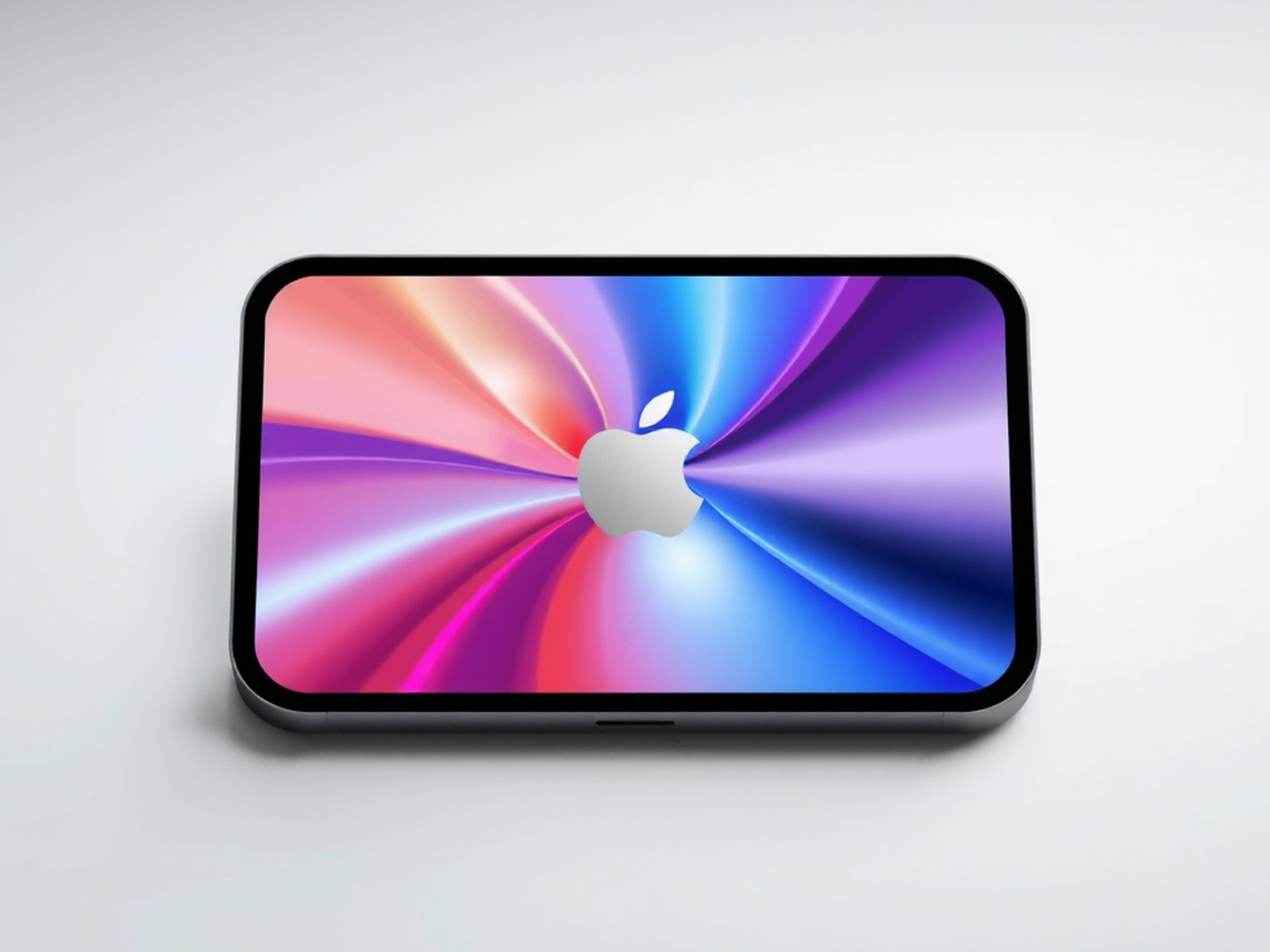
Balance between AI and basic SEO

Image SEO for multimodal AI systems

The customer journey no longer belongs to just one person

8 minutes
The Apple Ads ecosystem has long moved beyond App Store search. Today, the platform offers broader opportunities for scaling campaigns and effectively acquiring users within the Apple ecosystem.
If you still call it Apple Search Ads, you’re already behind.
At the beginning of the year, Apple officially dropped the word “Search” from its name, transitioning simply to Apple Ads — and this is more than a rebrand. It’s a strategic signal of deeper changes.
The platform is evolving — and so are the rules of effective advertising. Tactics that once ensured strong install volumes and profitability can now reduce performance and lead to inefficient spending.
At the same time, for advertisers who adapt quickly, Apple Ads is becoming one of the most reliable paid growth tools in the iOS environment.
Since the introduction of App Tracking Transparency (ATT), Apple Ads has only strengthened its position.
While other ad platforms have lost targeting accuracy, Apple leveraged its first-party data advantage to maintain high performance.
The company reports conversion rates exceeding 60% for search results ads — a figure confirmed by many marketers themselves.
The reason is simple: a user who types a query in the App Store is already ready to install. The high intent level makes this one of the most effective user acquisition points.
Apple offers two advertising modes — Basic and Advanced.
Basic mode can be compared to the “easy” mode of Meta Advantage+ or Google Smart Campaigns: Apple makes most of the decisions automatically, but advertisers lose control.
At first glance, Basic seems convenient — you pay per install rather than per tap, and the system automatically selects keywords and optimizes performance.
However, its limitations quickly become apparent:
Many advertisers start with Basic, quickly hit the budget ceiling, and realize that true scaling is possible only after switching to Advanced — where the real learning begins.
For those familiar with Google Ads or Meta Ads, Apple Ads Advanced may seem familiar — you can set bids, define audiences, and manage creatives. However, the mechanics differ significantly:
Despite this, mastering Advanced mode pays off: control over keywords, bids, and placements typically delivers higher efficiency.
According to AppTweak, campaigns in Basic mode have 15–25% higher CPI than optimized Advanced campaigns.
Apple Ads offers four main ad placements — each with its own strategy, constraints, and benefits:
Search Results:
Ads appear in response to user queries — the strongest intent signal. For example, a user searching for “budget tracker” is ready to download immediately.
Search Tab:
Ads appear before a search begins — ideal for brand awareness while users are still undecided.
Today Tab:
Located on the App Store home page — large, eye-catching formats perfect for visibility, though more expensive and creative-dependent.
Product Pages:
Ads appear in the “You Might Also Like” section when a user views another app — effective for capturing competitors’ audiences (though they can do the same in return).
Key principle: Don’t split your budget evenly among all placements.
Test them separately, identify top performers, and reallocate budgets strategically.
Use App Store design updates to your advantage.
After extensive testing, the most effective Apple Ads structure is based on four campaign types reflecting user intent:
Brand Campaigns:
The foundation. Include your app and company name with common spelling variations. Use exact match and high bids.
Ignoring this type often results in losing your own traffic to competitors.
Category Campaigns:
Target non-branded, functional keywords describing what your app does.
For a meditation app — “sleep sounds”, “anxiety relief”, “mindfulness app”.
These bring volume but face higher competition, requiring tighter bid control.
Competitor Campaigns:
Target competitor brand keywords — an aggressive but effective approach, especially when paired with Custom Product Pages (CPPs) highlighting your advantages.
Costs are higher, but users are more valuable as they’re already comparing alternatives.
Discovery Campaigns:
Used for testing new keywords. One ad group may target broad matches of proven terms, another — Search Match.
This helps uncover new relevant keywords that Apple’s algorithm identifies automatically.
Critical rule:
Add all successful exact-match keywords as negatives in Discovery campaigns — otherwise, your campaigns will compete against each other and waste budget.
Remember Creative Sets? Apple officially retired them.
They’ve been replaced by Custom Product Pages (CPPs) — a flexible tool that now defines creative success in Apple Ads.
Advertisers can create up to 35 unique app pages, each with its own screenshots, videos, and promotional text tailored to a specific audience or keyword theme.
Studies confirm consistent performance gains with CPPs.
According to AppTweak Guide 2025, well-optimized CPPs increase conversion by 8% for games and 6.6% for non-gaming apps.
The idea is simple:
If a user searches for “meal planning,” send them not to your standard app page but to one emphasizing meal-planning features.
Relevance triggers instantly — and hesitation drops.
To enable CPPs, create them in App Store Connect, then assign the relevant page variation within your Apple Ads ad group.
Apple Ads uses a cost-per-tap (CPT) model — you set a max bid but pay just one cent above the next highest bidder.
The goal: find balance between winning auctions and maintaining a profitable Cost per Acquisition (CPA).
Basic formula:
Multiply your target CPA by expected conversion rate (CVR).
Example: if your CPA = $5 and CVR = 20%, your starting bid should be around $1 — a good baseline for profitability.
To refine optimization, track Impression Share, which Apple reports as a range indicating your visibility level.
If it’s low, raising bids or budgets can expand reach — but always cross-check against your CPA goals.
Common mistake: abrupt bid changes.
Sudden increases or cuts disrupt learning and distort data.
Instead, apply small, gradual adjustments to maintain stability.
Paradoxically, in Apple Ads, overusing demographic filters (age, gender, etc.) reduces performance.
Why? Because users who disable Personalized Ads are automatically excluded — and they account for over 78% of all App Store search activity.
The best approach is to focus on keywords, creatives, and CPPs that naturally attract the right audience.
For instance, a fitness app using keywords like “home workouts” or “strength training” will reach its audience without restrictive filters.
The only consistently important filter is geography.
Create separate campaigns for the U.S., where competition, pricing, and user behavior differ significantly.
This gives flexibility for budget allocation and bid adjustments.
Before scaling, ensure your foundation is correct. The most frequent and costly mistakes include:
Scaling Apple Ads requires gradual growth.
Sudden budget jumps rarely yield positive results.
Start with your best-performing campaigns, gradually increase daily budgets, and allow several days for stabilization.
Use Impression Share Reports to identify if low visibility is the bottleneck.
If results remain profitable, slowly raise bids or budgets.
To expand reach cost-effectively, develop your keyword pool methodically:
launch Discovery campaigns with Search Match or broad variations of proven terms, then move successful ones to Exact Match.
When budgets allow, separate campaigns by country or region.
The U.S. market behaves differently, and Apple officially recommends geographic segmentation.
Don’t chase a perfect Impression Share — treat it as a guide.
Your real goal is to maintain positive ROAS and sustainable growth.
Apple Ads attribution continues to evolve.
On April 10, 2025, Apple officially integrated Apple Ads into AdAttributionKit, creating a unified structure for cross-platform performance comparison.
View-Through Attribution was also added — now the system counts installs that occur within 24 hours of viewing an ad, even without a tap.
Because attribution relies on App Store first-party data, it remains accurate even when cross-app tracking is disabled — preserving transparency where other platforms lose signals.
For full performance insight, integrate with Mobile Measurement Partners (MMPs) like AppsFlyer, Adjust, or Branch.
These tools track post-install events, revenue, and cross-channel performance.
Don’t stop at install metrics — installation alone doesn’t equal success.
Track deeper KPIs:
These metrics define real advertising effectiveness in the Apple Ads ecosystem of 2026.
Apple’s transition from Apple Search Ads to Apple Ads marks a broader transformation.
The company is expanding into streaming ads, remarketing, and tighter platform integration, making now the best time to master new tools and stay ahead of the evolving ecosystem.
While competition and cost-per-tap are increasing in key markets, opportunities remain. Advertisers who skillfully use Advanced mode, create Custom Product Pages, and apply disciplined scaling consistently outperform those relying on basic setups.
Ready to put these tactics into action? Start with a clear plan.
This sequence ensures clean setup and reliable data from day one:
Apple Ads isn’t the easiest platform to master, but today it’s an essential tool for iOS app growth.
We’ll help you build a high-performing campaign structure, optimize product pages, and ensure stable app growth within Apple’s ecosystem.
Order Apple Ads promotion with our team — and gain a competitive advantage before your rivals adapt to the new rules of the game.
This article available in Ukrainian.
Say hello to us!
A leading global agency in Clutch's top-15, we've been mastering the digital space since 2004. With 9000+ projects delivered in 65 countries, our expertise is unparalleled.
Let's conquer challenges together!
performance_marketing_engineers/
performance_marketing_engineers/
performance_marketing_engineers/
performance_marketing_engineers/
performance_marketing_engineers/
performance_marketing_engineers/
performance_marketing_engineers/
performance_marketing_engineers/